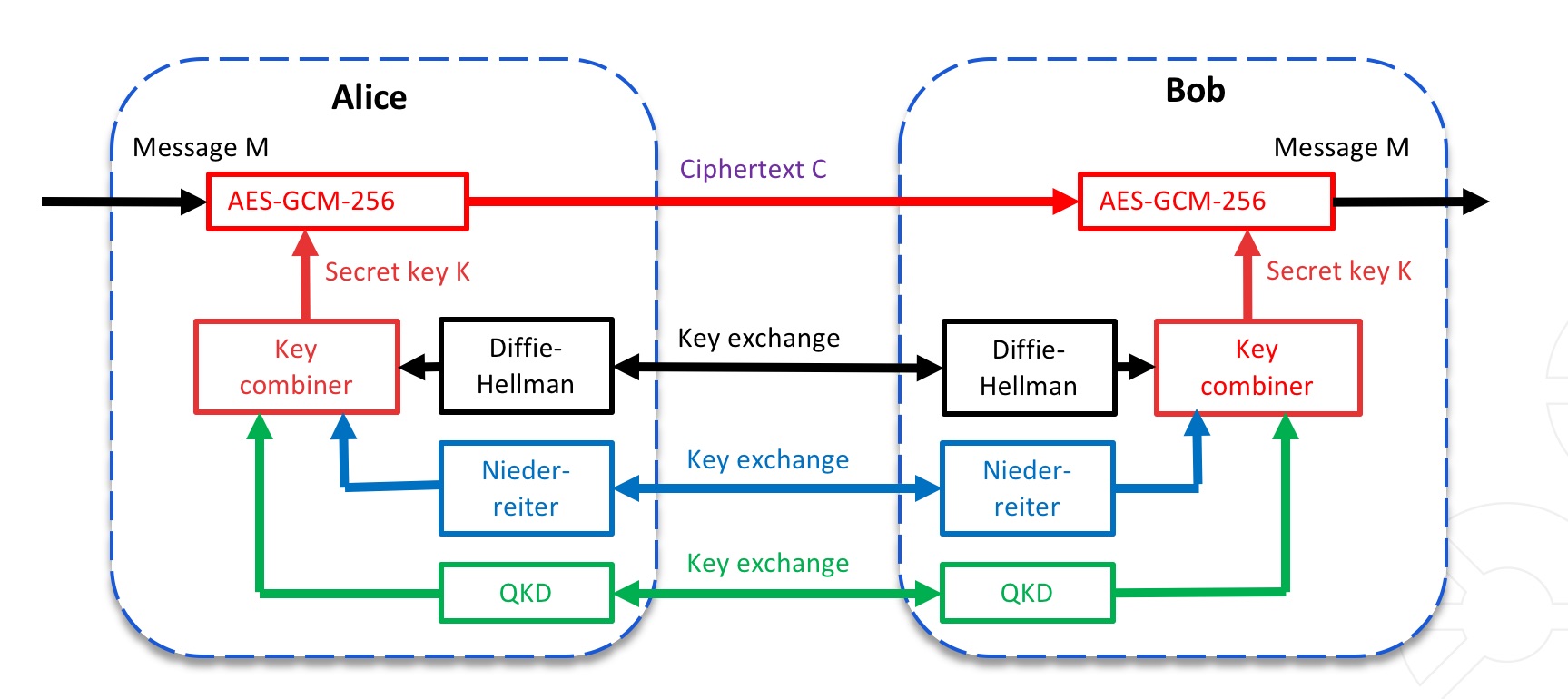ADVA adds quantum-resistant security to its optical systems
 Wednesday, August 8, 2018 at 8:25AM
Wednesday, August 8, 2018 at 8:25AM ADVA has demonstrated two encryption techniques for optical data transmission to counter the threat posed by quantum computing.
“Quantum computers are very powerful tools to solve specific classes of mathematical problems,” says Jörg-Peter Elbers, senior vice president, advanced technology at ADVA. “One of these classes of problems is solving equations behind certain cryptographic schemes.”
 The use of three key exchange schemes over one infrastructure: classical public-key encryption using the Diffie-Hellman scheme, the quantum-resistant Neiderreiter algorithm, and a quantum-key distribution (QKD) scheme. Source: ADVA
The use of three key exchange schemes over one infrastructure: classical public-key encryption using the Diffie-Hellman scheme, the quantum-resistant Neiderreiter algorithm, and a quantum-key distribution (QKD) scheme. Source: ADVA
Public-key encryption makes use of discrete logarithms, an example of a one-way function. Such functions use mathematical operations that for a conventional computer are easy to calculate in one direction but are too challenging to invert. Solving such complex mathematical problems, however, is exactly what quantum computers excel at.
A fully-fledged quantum computer does not yet exist but the rapid progress being made in the basic technologies suggests it is only a matter of time. Once such computers exist, public key based security will be undermined.
The looming advent of quantum computers already threatens data that must remain secure for years to come. There are agencies that specialise in tapping fibre, says Elbers, while the cost of storage is such that storing huge amounts of data traffic in a data centre is affordable. “The threat scenario is certainly a real one,” says Elbers.



